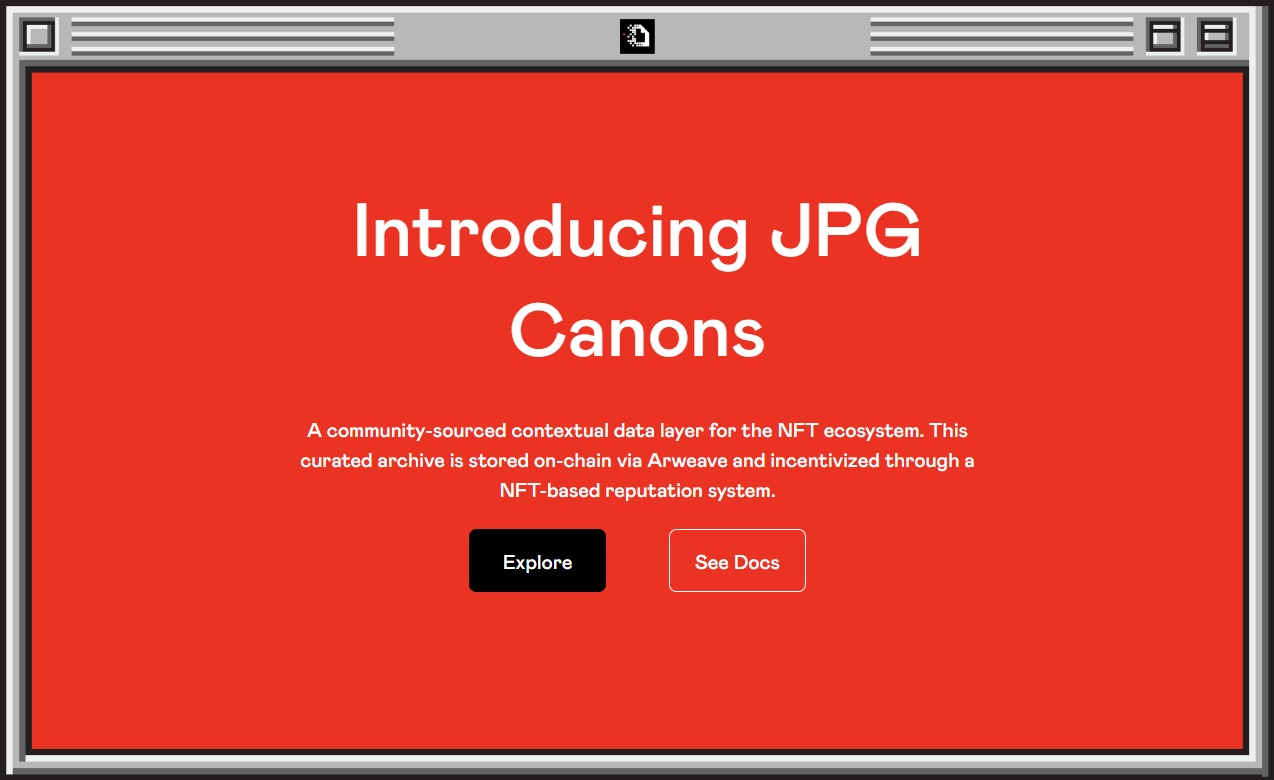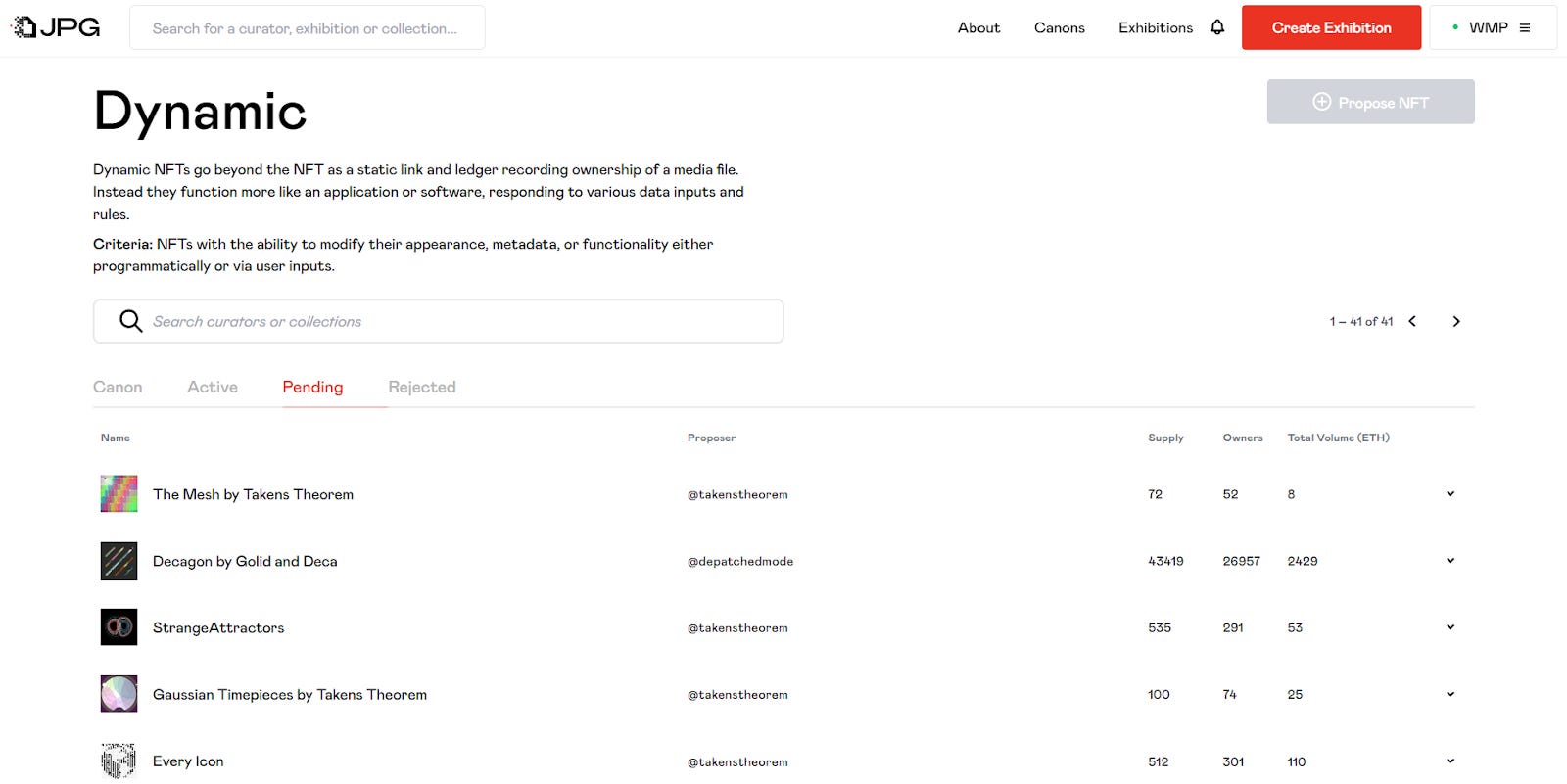Dear Bankless Nation,
In my recent NFT skill tree write-up, “curation” was one of the many skill branches I highlighted.
With the blockchain being an ever-growing labyrinth of digital things, curation is important because it improves context, discovery, organization, and scholarship around NFTs.
In other words, curation improves the cultural value of NFTs. As more of our lives come online and then onchain, we’ll need more infrastructure to support such cultural value, too.
Full disclosure, I contribute to JPG, an NFT curation protocol, so I have a unique vantage here.
With that said, JPG just launched a token-curated registry (TCR) system that’s on track to become the first community-sourced public good of its kind, an open contextual data layer for NFTs.
This TCR, the JPG Canons, still has its training wheels on, but it’s poised to provide useful “culture legos” — e.g. a decentralized repository of self-published artists or an evolving compendium of scam NFT projects — to the NFT ecosystem as it progresses.
For today’s post, then, let’s dive into this new NFT cultural infra and walk you through what you can expect from it going forward!
-WMP
Mapping Ethereum’s cultural landscape via TCRs
We launched JPG in 2021, with the goal to contribute to the NFT ecosystem by building infrastructure that maps relationships and substance through context.
— JPG (pronounced jpeg) (@______jpg______) 4:01 PM ∙ Dec 8, 2022
The Canons are a major step towards that mission.
What is JPG 📸
JPG is both a curatorial platform and curatorial infra for Ethereum NFTs.
On the platform side of things are JPG Exhibitions, which anyone with an Ethereum address can use to create NFT galleries whose data is then backed up on Arweave, a decentralized storage network, for permanence.
On the infra side is the new TCR system, JPG Canons. Built on Ethereum and also backed up on Arweave, these community-curated and community-governed lists will index NFTs and map out relational networks among them for improved cultural context in the NFT ecosystem.
What’s a TCR 🪙
A token-curated registry is a list of elements maintained in decentralized fashion through token-based voting.
Why decentralized? Because with centralized lists, you have to trust that the admins are honest and don’t abuse or arbitrarily manipulate the entries therein. This won’t fly in crypto!
Accordingly, a TCR system is explicitly designed to help a group curate and organize important information without centralized administration.
How JPG Canons work 🏛️

JPG Canons are a TCR system that uses NFT-based voting for creating and governing high-quality decentralized lists of NFTs, e.g. “Historical collectibles,” “Podcast NFTs,” “Nouns DAO derivatives.”
Users who propose Canons must provide a title, description, criteria, and three prospective submissions to begin the process. This kickstarts a proposal cycle where other community members can propose fitting collections or individual NFTs and consequently vote on everyone else’s submissions.

Access to this governance process is provided by free and non-transferable Canonicon NFTs, which are customizable and dynamically track their owners’ governance actions through an in-built reputation and XP system.
As such, the more you vote and propose with your Ethereum wallet, the more XP you receive, and in turn this unlocks more voting power over the Canons and more Canonicon layer customization options over time.
Grilling through the apocalypse with my @______jpg______ Canonicon jpg.space/canons
— zerobeta (@zerobeta) 4:09 PM ∙ Dec 8, 2022
During this alpha stage, JPG is starting with a single “Dynamic NFTs” Canon as a trial and then will select a few other useful categories before opening up the new Canons proposal process to anyone who holds a Canonicon NFT early next year.
Note that the initial Canonicon allowlist centered on JPG community members, though in the coming days the allowlist will be reopened via wallet or tweet verification, so keep your eyes peeled if you’re interested in joining in and contributing to the first Canons and beyond.
The tl;dr 🆕
The Canons are a bottom-up NFT TCR system meant to serve as a free public resource for discovery and indexing of the NFT space. The goal is for these NFT lists to make archiving, discovery, and research efforts easier and more reliable for web3 experts and web3 newcomers alike.
Zooming out 🤔
NFT marketplaces could seriously use decentralized verification badges. The chroniclers of NFT history want to map out the rise of tangibly intangible digital collectibles. Cryptoartists want to defragment and preserve their catalogs for posterity.
These are but a few of the areas where the Canons can make a difference going forward. And at a time when Big Algorithms dominate mainstream culture everywhere we look, community-coordinated efforts through NFTs and for NFTs represent an interesting flight of escape from the status quo and toward the next big cultural frontier, online and onchain.
